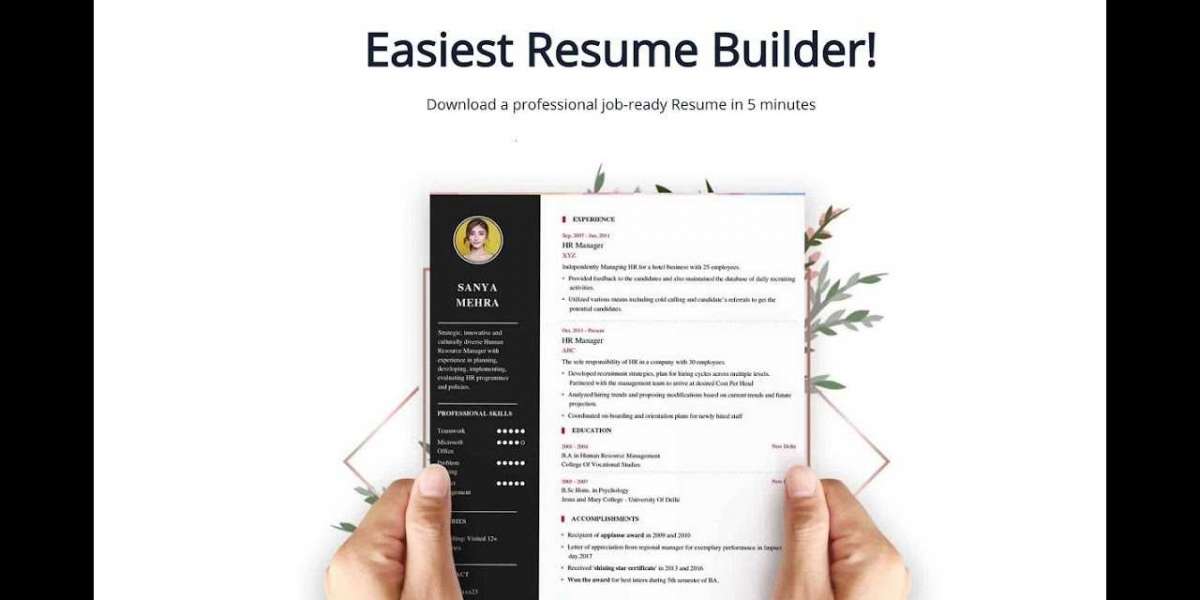Looking for remote jobs means you're not just competing locally anymore. You're now up against applicants from all over the world. That means your resume has to do more than just check boxes. It needs to stand out, stay relevant, and speak directly to hiring managers who may never meet you in person. If you're using a free resume builder, great. But using it smartly is what really counts.
Let's break down the smartest ways to make the most of free resume builders, specifically for remote job applications.
Choose a Resume Builder With ATS-Friendly Templates for Remote Roles
When it comes to remote job applications, you must be careful with your resume builder. Choose one that offers templates designed to pass Applicant Tracking Systems (ATS). These systems scan your resume before a human ever sees it. If your formatting is too fancy or the layout isn't optimized, your resume might be automatically rejected.
Look for templates that stick to clean formatting without any graphics, tables, or columns that confuse bots. Bonus points if the builder includes specific templates for remote or hybrid jobs. These will already have formatting cues in place that signal your openness to remote work. This way, you're saving time and maximizing visibility.
Add "Remote" to Your Job Titles, Locations, and Profile Summary for Clarity
When you're applying to remote jobs, clarity is your friend. Many applicants forget to signal their remote experience or interest in it on their resume. Don't assume recruiters will dig for this info. Make it easy for them.
Mention "Remote" in your past job titles if applicable, like "Marketing Manager (Remote)" or "Virtual Assistant – Remote." Also, in your location field, write something like "Based in Toronto | Open to Remote Work."
Your profile summary is another prime spot. Within the first few lines, state clearly that you're looking for or are experienced in remote work. This helps with ATS filtering while grabbing the attention of human readers scanning for remote-ready candidates.
Highlight Skills Suitable for Remote Work Environments
In remote roles, employers want candidates who can thrive without constant supervision. That means your resume needs to reflect the skills that are relevant for remote jobs. Highlight your experience with tools like Slack, Zoom, Trello, Asana, or Notion. These tools signal that you're tech-savvy and experienced with the platforms crucial for remote teams running. Also, focus on soft skills that matter in a remote setting, like time management, written communication, digital collaboration, and self-motivation.
Instead of just listing skills, embed them into your bullet points. For example: "Led cross-functional virtual teams using Asana, reducing project delivery time by 15%."
Use Built-In AI Suggestions for Better Impact
Many free resume builders like Jump Resume Builder now offer built-in AI writing assistants. These AI-powered tools can help you find better action verbs, fix vague statements, and optimize your descriptions. However, be careful not to rely on them blindly; rather, use them as a starting point.
The smart way to use AI suggestions is to refine, not replace. If an AI tool suggests changing "Responsible for managing schedules" to "Streamlined scheduling for improved team efficiency," consider how that wording strengthens your impact. Then edit further if needed to match your experience.
AI suggestions are especially useful when you're stuck rewriting bullet points or customizing resumes for multiple roles. They help you stay concise and consistent without sounding robotic.
Customize Each Resume Based on the Remote Job Description
This might sound like common advice, but it's often skipped. Tailoring your resume to each remote job description is non-negotiable. Remote roles vary more than you think, from timezone requirements to tech stack preferences. If your resume is too generic, it will get passed over.
Read each job post carefully and adjust your resume accordingly. Mirror keywords used in the posting, especially in your skills and summary sections. For example, if the role calls for "experience in async communication," echo that phrasing directly.
Most free builders let you duplicate and tweak resumes, so take advantage of that. Create a personalized version for each application, rather than sending the same document every time.
Export in Universal File Formats to Prevent Layout Errors
One of the most common mistakes people make while using resume builders is downloading their resume in a format that looks great on their screen—but falls apart on the recruiter's end. Therefore, you must stick to universally accepted formats like PDF or Word (Doc).
Before uploading your resume to any job portal, open it on different devices to check formatting. Avoid file types that aren't ATS-friendly, like JPG or PNG. Also, avoid overdesigning, even if a template looks flashy. Simple formats are always safer and more effective.
Some tools allow previewing your resume in ATS mode, which is a smart way to see how bots will read your content.
Save Multiple Editable Versions for Different Remote Roles
Different remote jobs demand different emphases. A remote customer support role might prioritize communication skills, while a remote product manager role would highlight leadership and cross-functional collaboration.
Use the resume builder's ability to save multiple versions. Store versions categorized by job type, like tech, marketing, admin, etc. That way, when a relevant job comes up, you're only tweaking the details instead of starting from scratch.
Name your files clearly to stay organized, like "Remote_PM_Resume_Aug2025" or "Remote_Support_JumpBuilder." This level of prep gives you speed and agility—key traits in competitive remote markets.
Add a Results-Oriented Approach to Every Resume Section
Remote employers care about outcomes. They need to know that you can deliver results without constant oversight. So, each part of your resume, from summary to experience, should reflect impact.
Avoid generic claims or buzzwords. Instead of saying "Handled customer emails," say "Resolved 30+ daily customer queries with 95% satisfaction rating, using Intercom and Slack."
Quantify where possible; add percentages, timelines, or specific improvements. This strengthens your credibility and sets you apart from applicants who only list responsibilities.
Include a Dedicated Tech Section
Remote roles rely heavily on digital tools. If you’ve worked with any of these tools, include them in a dedicated part of your resume for better visibility.
For example you can include your experience with tools like:
- Communication: Slack, Zoom, Google Meet
- Project Management: Trello, ClickUp, Notion
- File Sharing: Google Drive, Dropbox
- Time Tracking: Toggl, Clockify
Simply adding that you're skilled in these tools makes your resume instantly relatable for remote hiring teams, especially those scanning for software compatibility.
Create the Perfect Resume for Remote Applications with Jump Resume Builder
Remote jobs are competitive, but with the right resume strategy, you're already one step ahead. Free resume tools offer great value, but they require to be used smartly. You have to think about ATS compatibility, industry norms, and suitable words and formats.
Need a free resume builder that simplifies all of this? Try Jump Resume Builder. It's designed with remote job seekers in mind, offering built-in AI suggestions, clean formatting, and the ability to export in universal formats. No matter the role you're applying for, Jump helps you stay one click away from your next opportunity.
Get started today and create a resume that works perfectly for you.
Read Also: 5 Main Reasons Why Coworking Is Becoming More and More Popular








